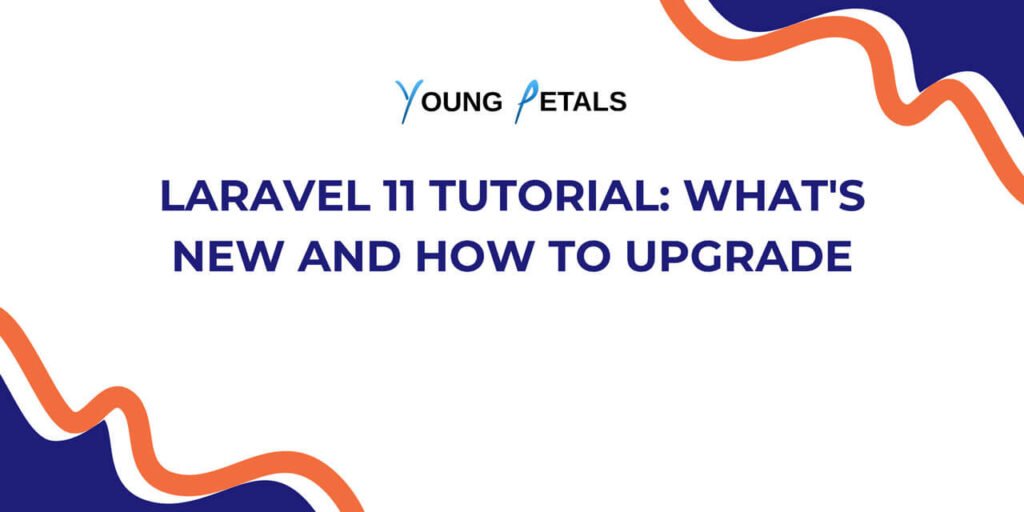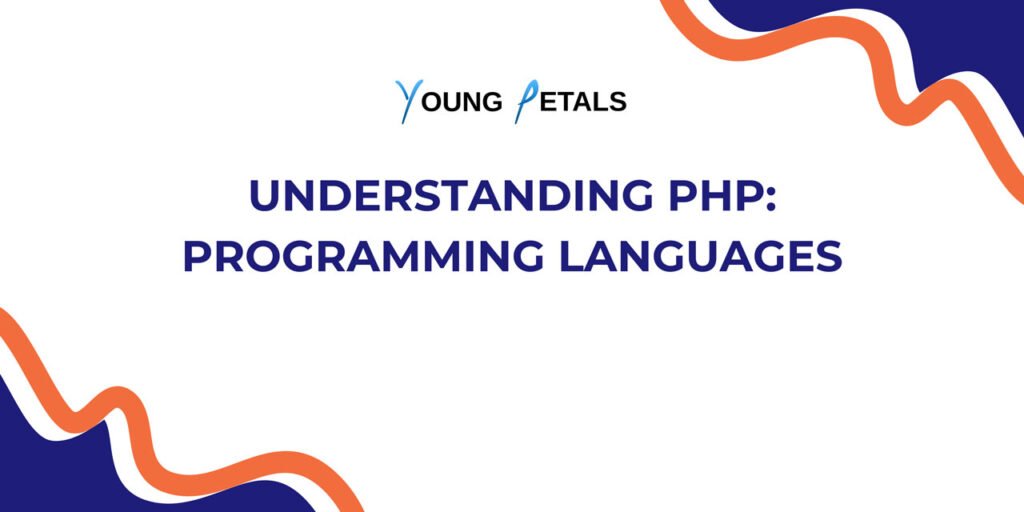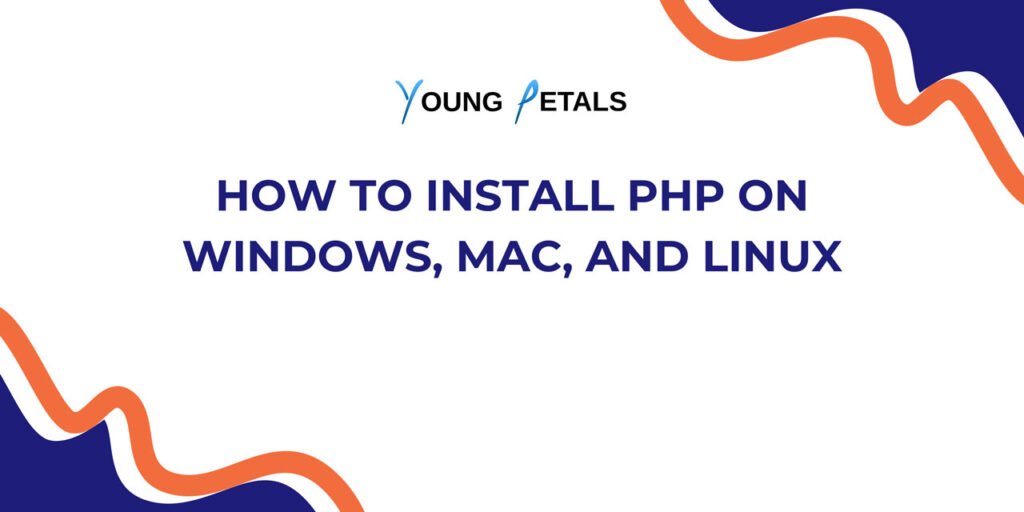C# (pronounced “C-sharp”) is one of the most versatile and powerful programming languages in the modern software development landscape. Whether you’re building web applications, desktop software, mobile apps, or games, C# provides a robust foundation that millions of developers worldwide rely on. In this comprehensive guide, we’ll explore everything you need to know about C# programming in 2024.
What is C# Programming Language?
C# is a modern, object-oriented programming language developed by Microsoft as part of the .NET framework. First released in 2000, C# was designed to combine the power of C++ with the simplicity of Visual Basic, creating a language that’s both powerful and accessible to developers of all skill levels.
Key Characteristics of C#
- Type-safe: Prevents common programming errors at compile time
- Object-oriented: Supports classes, inheritance, polymorphism, and encapsulation
- Memory-managed: Automatic garbage collection handles memory management
- Cross-platform: Runs on Windows, macOS, and Linux through .NET Core/.NET 5+
- Strongly typed: Variables must be declared with specific data types
History and Evolution of C#
The Journey from C# 1.0 to C# 12
C# has undergone significant evolution since its inception:
- C# 1.0 (2002): Initial release with basic object-oriented features
- C# 2.0 (2005): Introduced generics, nullable types, and anonymous methods
- C# 3.0 (2007): Added LINQ, lambda expressions, and automatic properties
- C# 4.0 (2010): Dynamic binding and named/optional parameters
- C# 5.0 (2012): Async/await for asynchronous programming
- C# 6.0 (2015): String interpolation and expression-bodied members
- C# 7.0-7.3 (2017-2018): Pattern matching, tuples, and local functions
- C# 8.0 (2019): Nullable reference types and switch expressions
- C# 9.0 (2020): Records and init-only properties
- C# 10.0 (2021): Global using statements and file-scoped namespaces
- C# 11.0 (2022): Generic math support and raw string literals
- C# 12.0 (2023): Primary constructors and collection expressions
Why Choose C# in 2024?
1. Versatility and Cross-Platform Support
C# now runs seamlessly across multiple platforms thanks to .NET 5+ unification. You can develop applications for:
- Windows desktop applications (WPF, WinUI)
- Web applications (ASP.NET Core)
- Mobile apps (Xamarin, .NET MAUI)
- Cloud applications (Azure)
- Game development (Unity)
- Microservices and APIs
2. Strong Ecosystem and Community
The C# ecosystem offers extensive libraries, frameworks, and tools:
- NuGet Package Manager: Access to thousands of pre-built libraries
- Visual Studio: World-class IDE with IntelliSense and debugging
- Active Community: Large, supportive developer community
- Microsoft Support: Continuous updates and long-term support
3. Performance and Scalability
Modern C# applications deliver excellent performance through:
- Ahead-of-Time (AOT) compilation
- Just-In-Time (JIT) optimization
- Efficient garbage collection
- Memory-safe operations
4. Career Opportunities
C# developers enjoy strong job market demand with:
- High average salaries
- Diverse industry opportunities
- Enterprise-level projects
- Remote work possibilities
Getting Started with C# Programming
Setting Up Your Development Environment
Step 1: Install .NET SDK
Download and install the latest .NET SDK from the official Microsoft website. The SDK includes the runtime, libraries, and tools needed for C# development.
# Verify installation
dotnet --version
Step 2: Choose Your IDE
Popular development environments for C#:
- Visual Studio: Full-featured IDE for Windows and Mac
- Visual Studio Code: Lightweight, cross-platform editor
- JetBrains Rider: Cross-platform .NET IDE
- MonoDevelop: Open-source IDE
Step 3: Create Your First Project
# Create a new console application
dotnet new console -n MyFirstApp
cd MyFirstApp
# Run the application
dotnet run
C# Syntax Fundamentals
Basic Syntax Structure
Every C# program follows a basic structure:
using System;
namespace MyApplication
{
class Program
{
static void Main(string[] args)
{
Console.WriteLine("Hello, World!");
}
}
}
Variables and Data Types
Primitive Data Types
// Integer types
int age = 25;
long population = 7800000000L;
short temperature = -10;
// Floating-point types
float price = 29.99f;
double distance = 384400.0;
decimal salary = 50000.00m;
// Character and string types
char grade = 'A';
string name = "John Doe";
// Boolean type
bool isActive = true;
// Date and time
DateTime now = DateTime.Now;
Variable Declaration and Initialization
// Explicit type declaration
int number = 42;
// Implicit type declaration (var keyword)
var message = "Hello, C#!";
var isValid = true;
// Constant declaration
const double PI = 3.14159;
readonly string AppName = "MyApp";
Control Structures
Conditional Statements
// If-else statement
int score = 85;
if (score >= 90)
{
Console.WriteLine("Grade: A");
}
else if (score >= 80)
{
Console.WriteLine("Grade: B");
}
else if (score >= 70)
{
Console.WriteLine("Grade: C");
}
else
{
Console.WriteLine("Grade: F");
}
// Switch statement
string dayOfWeek = "Monday";
switch (dayOfWeek)
{
case "Monday":
Console.WriteLine("Start of work week");
break;
case "Friday":
Console.WriteLine("TGIF!");
break;
default:
Console.WriteLine("Regular day");
break;
}
// Switch expression (C# 8.0+)
string GetDayType(string day) => day switch
{
"Saturday" or "Sunday" => "Weekend",
_ => "Weekday"
};
Loops
// For loop
for (int i = 0; i < 5; i++)
{
Console.WriteLine($"Iteration: {i}");
}
// While loop
int counter = 0;
while (counter < 3)
{
Console.WriteLine($"Counter: {counter}");
counter++;
}
// Do-while loop
int number;
do
{
Console.Write("Enter a positive number: ");
} while (!int.TryParse(Console.ReadLine(), out number) || number <= 0);
// Foreach loop
string[] fruits = { "apple", "banana", "orange" };
foreach (string fruit in fruits)
{
Console.WriteLine(fruit);
}
Object-Oriented Programming in C#
Classes and Objects
// Class definition
public class Person
{
// Fields (private by default)
private string name;
private int age;
// Properties
public string Name
{
get { return name; }
set { name = value; }
}
// Auto-implemented property
public int Age { get; set; }
// Constructor
public Person(string name, int age)
{
this.Name = name;
this.Age = age;
}
// Method
public void Introduce()
{
Console.WriteLine($"Hi, I'm {Name} and I'm {Age} years old.");
}
// Method with return value
public bool IsAdult()
{
return Age >= 18;
}
}
// Using the class
class Program
{
static void Main(string[] args)
{
Person person1 = new Person("Alice", 25);
person1.Introduce();
if (person1.IsAdult())
{
Console.WriteLine("This person is an adult.");
}
}
}
Inheritance
// Base class
public class Animal
{
public string Name { get; set; }
public virtual void MakeSound()
{
Console.WriteLine("The animal makes a sound");
}
}
// Derived class
public class Dog : Animal
{
public string Breed { get; set; }
public override void MakeSound()
{
Console.WriteLine("Woof! Woof!");
}
public void Fetch()
{
Console.WriteLine($"{Name} is fetching the ball!");
}
}
// Usage
Dog myDog = new Dog
{
Name = "Buddy",
Breed = "Golden Retriever"
};
myDog.MakeSound(); // Output: Woof! Woof!
myDog.Fetch(); // Output: Buddy is fetching the ball!
Interfaces
// Interface definition
public interface IDrawable
{
void Draw();
double GetArea();
}
// Implementation
public class Circle : IDrawable
{
public double Radius { get; set; }
public Circle(double radius)
{
Radius = radius;
}
public void Draw()
{
Console.WriteLine("Drawing a circle");
}
public double GetArea()
{
return Math.PI * Radius * Radius;
}
}
Polymorphism
public abstract class Shape
{
public abstract double GetArea();
public abstract void Draw();
}
public class Rectangle : Shape
{
public double Width { get; set; }
public double Height { get; set; }
public override double GetArea()
{
return Width * Height;
}
public override void Draw()
{
Console.WriteLine("Drawing a rectangle");
}
}
public class Triangle : Shape
{
public double Base { get; set; }
public double Height { get; set; }
public override double GetArea()
{
return 0.5 * Base * Height;
}
public override void Draw()
{
Console.WriteLine("Drawing a triangle");
}
}
// Polymorphism in action
static void DisplayShapeInfo(Shape shape)
{
shape.Draw();
Console.WriteLine($"Area: {shape.GetArea()}");
}
Advanced C# Features
LINQ (Language Integrated Query)
using System.Linq;
int[] numbers = { 1, 2, 3, 4, 5, 6, 7, 8, 9, 10 };
// Query syntax
var evenNumbers = from n in numbers
where n % 2 == 0
select n;
// Method syntax
var evenNumbersMethod = numbers.Where(n => n % 2 == 0);
// Complex LINQ operations
var result = numbers
.Where(n => n > 3)
.Select(n => n * 2)
.OrderByDescending(n => n)
.Take(3);
foreach (var item in result)
{
Console.WriteLine(item);
}
Asynchronous Programming
using System.Threading.Tasks;
using System.Net.Http;
public class DataService
{
private static readonly HttpClient client = new HttpClient();
// Async method
public async Task<string> GetDataAsync(string url)
{
try
{
HttpResponseMessage response = await client.GetAsync(url);
response.EnsureSuccessStatusCode();
string content = await response.Content.ReadAsStringAsync();
return content;
}
catch (HttpRequestException ex)
{
Console.WriteLine($"Error: {ex.Message}");
return null;
}
}
}
// Usage
public async Task MainAsync()
{
DataService service = new DataService();
string data = await service.GetDataAsync("https://api.example.com/data");
Console.WriteLine(data);
}
Generics
// Generic class
public class GenericList<T>
{
private List<T> items = new List<T>();
public void Add(T item)
{
items.Add(item);
}
public T Get(int index)
{
return items[index];
}
public int Count => items.Count;
}
// Generic method
public static T GetMax<T>(T a, T b) where T : IComparable<T>
{
return a.CompareTo(b) > 0 ? a : b;
}
// Usage
GenericList<int> intList = new GenericList<int>();
intList.Add(1);
intList.Add(2);
GenericList<string> stringList = new GenericList<string>();
stringList.Add("Hello");
stringList.Add("World");
int maxNumber = GetMax(5, 10);
string maxString = GetMax("apple", "banana");
Exception Handling
Try-Catch-Finally Blocks
public class FileProcessor
{
public void ProcessFile(string filePath)
{
FileStream fileStream = null;
try
{
fileStream = new FileStream(filePath, FileMode.Open);
// Process file
Console.WriteLine("File processed successfully");
}
catch (FileNotFoundException ex)
{
Console.WriteLine($"File not found: {ex.Message}");
}
catch (UnauthorizedAccessException ex)
{
Console.WriteLine($"Access denied: {ex.Message}");
}
catch (Exception ex)
{
Console.WriteLine($"Unexpected error: {ex.Message}");
}
finally
{
fileStream?.Close();
Console.WriteLine("Cleanup completed");
}
}
}
Custom Exceptions
public class InsufficientFundsException : Exception
{
public decimal RequestedAmount { get; }
public decimal AvailableAmount { get; }
public InsufficientFundsException(decimal requested, decimal available)
: base($"Insufficient funds. Requested: {requested}, Available: {available}")
{
RequestedAmount = requested;
AvailableAmount = available;
}
}
public class BankAccount
{
public decimal Balance { get; private set; }
public void Withdraw(decimal amount)
{
if (amount > Balance)
{
throw new InsufficientFundsException(amount, Balance);
}
Balance -= amount;
}
}
Popular C# Frameworks and Libraries
1. ASP.NET Core
Web development framework for building modern web applications:
// Simple API controller
[ApiController]
[Route("api/[controller]")]
public class ProductsController : ControllerBase
{
[HttpGet]
public IActionResult GetProducts()
{
var products = new[]
{
new { Id = 1, Name = "Laptop", Price = 999.99 },
new { Id = 2, Name = "Phone", Price = 699.99 }
};
return Ok(products);
}
}
2. Entity Framework Core
Object-relational mapping (ORM) framework:
public class Product
{
public int Id { get; set; }
public string Name { get; set; }
public decimal Price { get; set; }
}
public class AppDbContext : DbContext
{
public DbSet<Product> Products { get; set; }
protected override void OnConfiguring(DbContextOptionsBuilder optionsBuilder)
{
optionsBuilder.UseSqlServer("Server=.;Database=MyApp;Trusted_Connection=true;");
}
}
// Usage
using var context = new AppDbContext();
var products = await context.Products
.Where(p => p.Price > 500)
.ToListAsync();
3. Blazor
Framework for building interactive web UIs using C#:
@page "/counter"
<h3>Counter</h3>
<p>Current count: @currentCount</p>
<button class="btn btn-primary" @onclick="IncrementCount">Click me</button>
@code {
private int currentCount = 0;
private void IncrementCount()
{
currentCount++;
}
}
4. Xamarin/.NET MAUI
Cross-platform mobile development:
public partial class MainPage : ContentPage
{
public MainPage()
{
InitializeComponent();
}
private void OnCounterClicked(object sender, EventArgs e)
{
count++;
CounterBtn.Text = $"Clicked {count} time{(count == 1 ? "" : "s")}";
}
private int count = 0;
}
C# Development Best Practices
1. Code Organization and Structure
- Use meaningful names for classes, methods, and variables
- Follow the Single Responsibility Principle (SRP)
- Organize code into logical namespaces
- Use proper indentation and formatting
2. Error Handling
- Use specific exception types
- Don’t swallow exceptions silently
- Log exceptions appropriately
- Use defensive programming techniques
3. Performance Optimization
- Use StringBuilder for string concatenation in loops
- Prefer List<T> over ArrayList
- Use async/await for I/O operations
- Implement IDisposable for resource cleanup
4. Security Considerations
- Validate all input data
- Use parameterized queries to prevent SQL injection
- Implement proper authentication and authorization
- Keep sensitive data encrypted
5. Testing
[TestClass]
public class CalculatorTests
{
[TestMethod]
public void Add_TwoPositiveNumbers_ReturnsCorrectSum()
{
// Arrange
var calculator = new Calculator();
// Act
var result = calculator.Add(2, 3);
// Assert
Assert.AreEqual(5, result);
}
}
C# Career Path and Learning Resources
Learning Progression
- Beginner Level
- Basic syntax and data types
- Control structures and loops
- Methods and classes
- Arrays and collections
- Intermediate Level
- Object-oriented programming concepts
- Exception handling
- File I/O operations
- LINQ and lambda expressions
- Advanced Level
- Asynchronous programming
- Design patterns
- Advanced generics
- Performance optimization
- Expert Level
- Architecture design
- Framework development
- Advanced debugging
- Leadership and mentoring
Recommended Learning Resources
Official Resources
- Microsoft Learn (free online courses)
- .NET Documentation
- C# Programming Guide
- Visual Studio tutorials
Books
- “C# 12 and .NET 8: Modern Cross-Platform Development” by Mark J. Price
- “Pro C# 10 with .NET 6” by Andrew Troelsen
- “Clean Code” by Robert C. Martin
- “Design Patterns” by Gang of Four
Online Platforms
- Pluralsight
- Udemy
- Coursera
- edX
- YouTube tutorials
Community Resources
- Stack Overflow
- GitHub repositories
- Reddit (r/csharp)
- Discord servers
- Local user groups
Career Opportunities
C# developers can pursue various career paths:
- Web Developer: ASP.NET Core applications
- Desktop Application Developer: WPF, WinUI applications
- Mobile Developer: Xamarin, .NET MAUI applications
- Game Developer: Unity game development
- Enterprise Developer: Large-scale business applications
- Cloud Developer: Azure-based solutions
- DevOps Engineer: Automation and deployment tools
- Software Architect: System design and architecture
Future of C# Programming
Current Trends and Developments
The C# ecosystem continues to evolve with exciting developments:
Cloud-Native Development
- Microservices architecture
- Containerization with Docker
- Kubernetes orchestration
- Serverless computing with Azure Functions
Performance Improvements
- Native AOT compilation
- Minimal APIs
- Source generators
- Hot reload capabilities
Cross-Platform Growth
- .NET unification across platforms
- ARM64 support
- WebAssembly (WASM) support
- IoT and embedded systems
Modern Language Features
- Pattern matching enhancements
- Records and immutable types
- Nullable reference types
- Top-level programs
Industry Adoption
Major companies using C#:
- Microsoft (Office, Azure, Windows)
- Stack Overflow
- Dell
- UBS
- Alibaba Travels
- GoDaddy
- Delivery Hero
Conclusion
C# remains one of the most valuable programming languages to learn in 2024. Its versatility, performance, and extensive ecosystem make it an excellent choice for developers at all levels. Whether you’re interested in web development, mobile apps, desktop applications, or game development, C# provides the tools and frameworks you need to succeed.
The language’s continuous evolution, backed by Microsoft’s substantial investment and a thriving community, ensures that C# skills will remain relevant and in-demand for years to come. With cross-platform capabilities, modern language features, and excellent development tools, C# offers a perfect balance of productivity and power.
Start your C# journey today, and join millions of developers who have discovered the elegance and efficiency of this remarkable programming language. The opportunities are limitless, and the future is bright for C# developers in our increasingly digital world.
Getting Started Checklist
- Install .NET SDK
- Set up your preferred IDE (Visual Studio, VS Code, or Rider)
- Create your first “Hello World” application
- Learn basic syntax and data types
- Practice with simple programs and exercises
- Join C# communities and forums
- Start building real projects
- Explore different frameworks and libraries
- Contribute to open-source projects
- Keep learning and stay updated with new features
Remember, becoming proficient in C# is a journey, not a destination. Be patient with yourself, practice regularly, and don’t hesitate to seek help from the amazing C# community. Happy coding!




